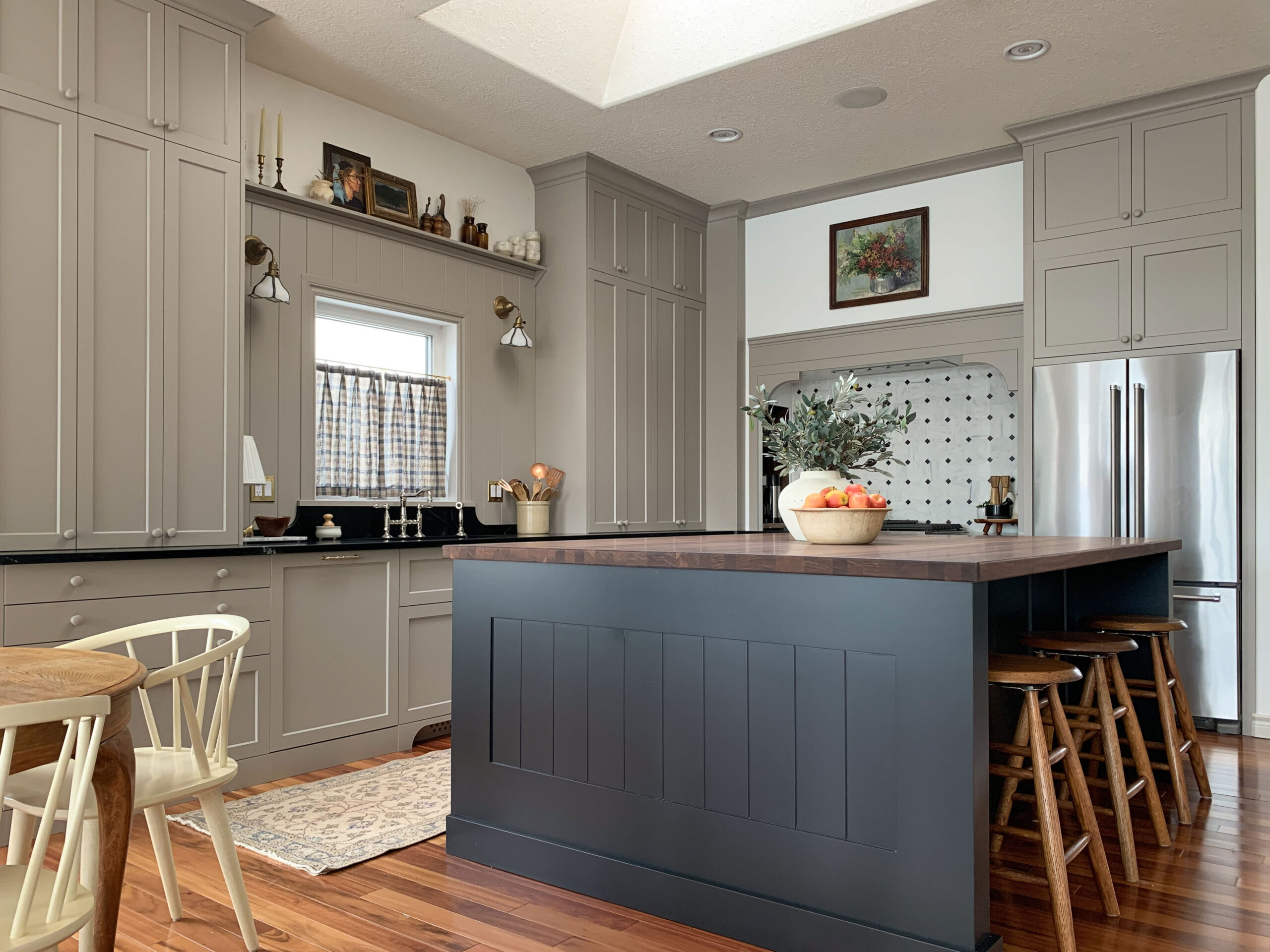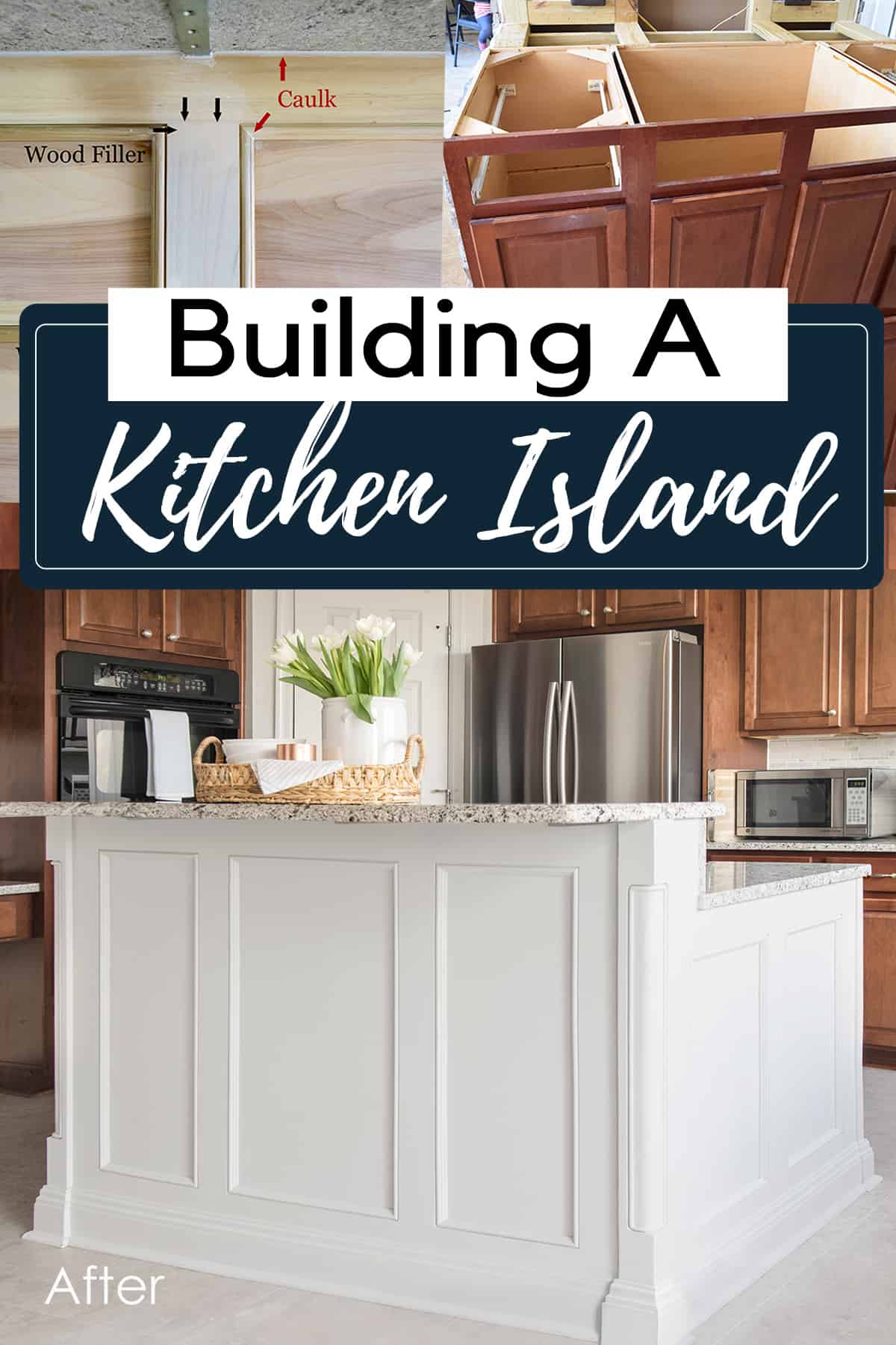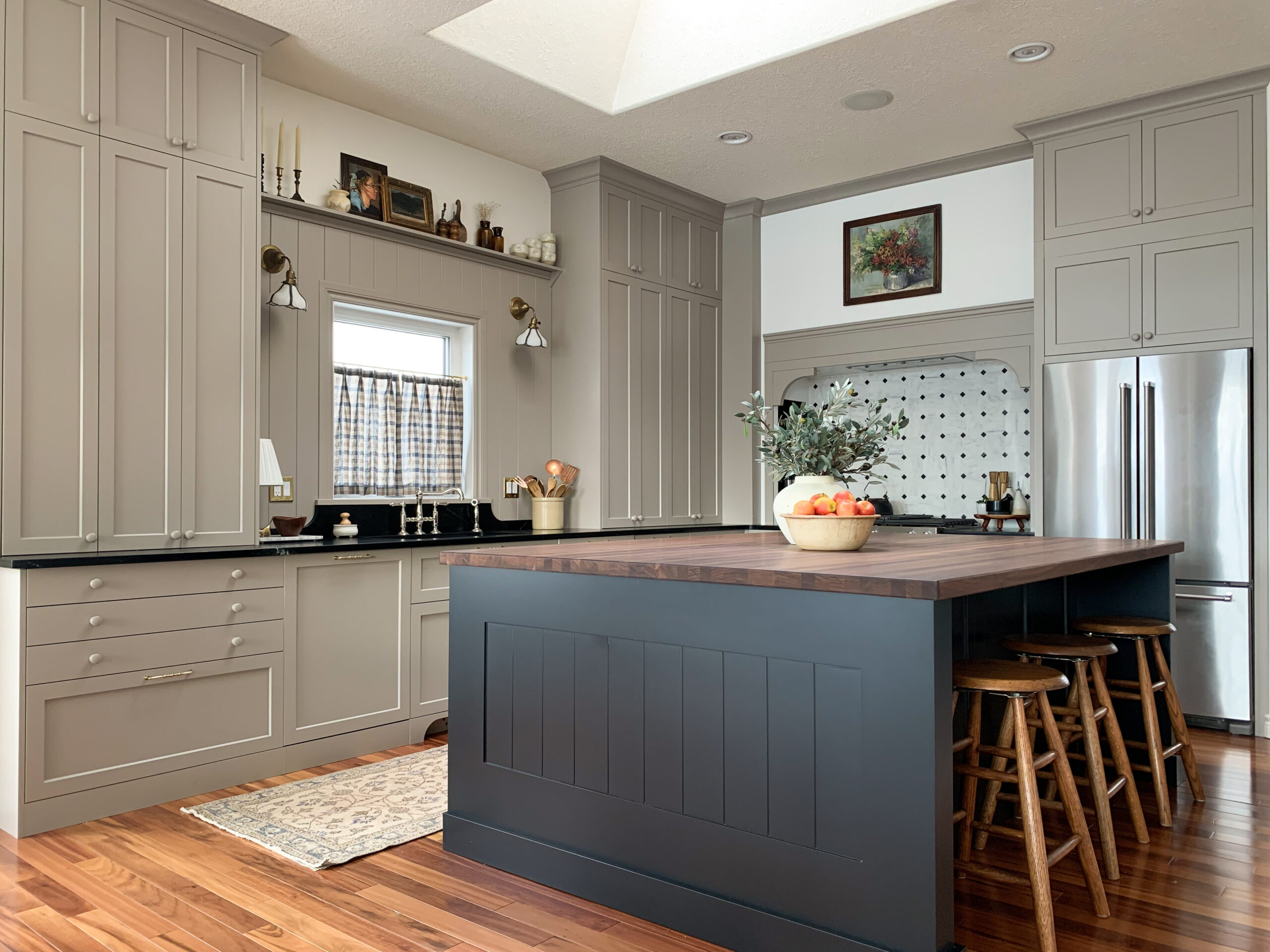To build a kitchen island with stock cabinets, attach the cabinets and secure them to the floor for stability. Use a countertop to complete the island.
Want to add functional storage space and workspace to your kitchen? Building a kitchen island with stock cabinets can be a cost-effective and stylish solution. By following simple steps and using readily available materials, you can create a custom island that suits your needs and enhances the overall look of your kitchen.
Whether you are a DIY enthusiast or a homeowner looking to revamp your space, constructing a kitchen island with stock cabinets is a rewarding project that can elevate the functionality and aesthetics of your kitchen. Let’s dive into the process of building your kitchen island using stock cabinets.
Choosing The Right Stock Cabinets
Measurements and Placement: Begin by measuring the available space in your kitchen for the island.
Cabinet Styles and Finishes: Consider selecting stock cabinets that complement your kitchen’s decor.

Credit: erinzubotdesign.com
Gathering Materials And Tools
To begin building a kitchen island with stock cabinets, the first step is to gather all the necessary materials and tools. Ensure you have everything ready before starting the project.
Stock Cabinets
Consider the size and design of the stock cabinets needed for the kitchen island. Measure the space where the island will be placed to ensure a proper fit.
Countertop And Backsplash Materials
Choose a countertop material that complements your kitchen decor. Materials like granite, quartz, or butcher block are popular choices. Select a backsplash material that matches the countertop for a cohesive look.
Hardware And Fasteners
Acquire the necessary hardware such as drawer pulls, cabinet knobs, and fasteners to assemble the cabinets securely. Ensure you have the right tools for installation.
Additional Tools
Aside from the specific materials, gather additional tools like a drill, screws, screwdriver, level, tape measure, and a saw. These tools are essential for assembling the cabinets and completing the project.
Preparing The Area
To start building a kitchen island with stock cabinets, the initial step is to prepare the area by clearing out any existing clutter or obstacles. This includes measuring the space for accurate cabinet placement and ensuring a level surface for installation.
Taking these preparatory measures will set a solid foundation for the rest of the project.
Clearing And Cleaning The Space
To begin building your kitchen island with stock cabinets, the first step is to clear and clean the area where the island will be installed. Remove any existing furniture, appliances, or debris that may be in the way. This will provide you with a clear workspace and allow you to accurately measure and plan the layout of your island.
Next, give the space a thorough cleaning. Remove any dust, dirt, or grease that may have accumulated on the floor or surrounding surfaces. This will ensure a clean installation and create a solid foundation for your island.
Determining The Island Size
Once the area is cleared and cleaned, it’s time to determine the size of your island. Consider the available space in your kitchen and the functions you want your island to serve. Will it be primarily used for food preparation, dining, or storage?
Measure the length and width of the space where your island will be installed. Take into account any appliances or doors that may interfere with the island’s placement. Keep in mind that the island should be proportionate to the size of your kitchen and allow for comfortable movement around it.
Marking The Layout
With the size of your island in mind, it’s time to mark the layout on the floor. Start by using a measuring tape and pencil to measure and mark the dimensions of your island on the floor. This will give you a visual representation of how the island will fit into the space and allow you to make any necessary adjustments before installation.
Use painter’s tape or chalk to create an outline of the island on the floor. This will help you visualize the final placement and ensure that the island fits perfectly within the designated area. Take the time to double-check your measurements and layout markings to ensure accuracy.
Once you have marked the layout, step back and evaluate the placement of the island within your kitchen. Consider the flow of traffic and the proximity to other kitchen elements, such as the sink and stove. Make any necessary adjustments to the layout before proceeding to the next step.
Assembling The Island Base
Crafting a kitchen island using stock cabinets is a simple and cost-effective project. Begin by assembling the base of the island, using the cabinets as the foundation. This versatile approach allows for customization, making your island a unique and functional addition to your kitchen space.
Assembling the Island Base
Building a kitchen island with stock cabinets is a cost-effective way to add functionality and style to your kitchen. The first step in this process is assembling the island base, which involves installing the base cabinets, attaching and securing them, and adding trim and finishing touches.
Installing The Base Cabinets
To begin, place the first cabinet in position, ensuring it is level and plumb. Secure it to the floor using screws. Then, align the next cabinet with the first one and secure them together using screws from the inside of the cabinets.
Attaching And Securing Cabinets
With the base cabinets in place, attach a 2×4 support rail to the back of the cabinets using screws. This will provide extra stability for the countertop. Additionally, secure the cabinets to the wall using screws driven through the back of the cabinet and into the wall studs.
Adding Trim And Finishing Touches
To give the island a polished look, install decorative trim along the bottom edge of the cabinets. This can be achieved using a brad nailer and finishing nails for a seamless finish. After the trim is in place, add any desired finishing touches such as toe kicks and decorative panels to complete the look.
With the island base assembled, you’re now ready to move on to the next steps in building your kitchen island.
Installing The Countertop
An essential step in building a kitchen island with stock cabinets is installing the countertop. This is not only a functional element but also a key design feature that can elevate the entire kitchen space.
Measuring And Cutting The Countertop
Before starting this process, measure the length and width of your kitchen island to determine the dimensions needed for the countertop. Use a straightedge and pencil to mark the cutting lines on the countertop material. Then, carefully cut the material to fit the dimensions, ensuring precision and accuracy.
Placing And Securing The Countertop
Once the countertop is cut to size, carefully place it on top of the stock cabinets. Make sure that it fits snugly and aligns properly with the cabinets. Use a level to ensure that the surface is even. After verifying the fit, secure the countertop to the cabinets using screws from underneath. This will provide stability and prevent any shifting over time.
Sealing The Countertop Edges
After the countertop is securely in place, the next step is to seal the edges. Apply a waterproof sealant along the edges of the countertop to prevent moisture from seeping in and causing damage over time. This will also give the countertop a finished look and protect the material from wear and tear.

Credit: www.cravingsomecreativity.com
Adding The Backsplash
Learn how to enhance your kitchen island with stock cabinets by adding a stylish backsplash. Elevate your kitchen’s aesthetic with this simple yet effective DIY project.
A well-designed kitchen island can be a focal point in any kitchen, adding both functionality and style. In our previous sections, we discussed the process of building a kitchen island using stock cabinets. Now, it’s time to take your kitchen island to the next level by adding a beautiful and practical backsplash. The backsplash not only protects your walls from moisture and stains but also adds a touch of personality to your kitchen.
Choosing And Preparing The Backsplash Material
Choosing the right backsplash material is essential for creating a cohesive and visually appealing kitchen design. Here’s how to select and prepare the perfect backsplash material:
- Consider your kitchen’s style: Take into account the overall style of your kitchen when choosing a backsplash material. Whether you have a modern, farmhouse, or traditional kitchen, there’s a backsplash material that will complement the existing design.
- Think about maintenance: Different materials require different levels of maintenance. Consider how much time and effort you are willing to invest in cleaning and maintaining the backsplash before making your decision.
- Take measurements: Measure the area where you will install the backsplash to determine the amount of material you will need. This will help you accurately estimate the cost and avoid unnecessary waste.
- Prepare the surface: Before installing the backsplash, ensure that the surface is clean and smooth. Remove any existing wallpaper or paint, and repair any imperfections to create a level and even base for your backsplash.
- Apply a primer: Priming the wall before installing the backsplash will help the adhesive bond better and ensure a long-lasting installation. Choose a primer that is suitable for the material of your backsplash and apply it according to the manufacturer’s instructions.
- Allow for drying time: Give the primer enough time to dry completely before proceeding with the installation. This will ensure a strong and stable surface for your backsplash.
Installing The Backsplash
Now that you’ve chosen and prepared your backsplash material, it’s time to install it. Follow these steps for a seamless and professional-looking installation:
- Apply adhesive: Use a notched trowel to apply a thin layer of adhesive to the wall. Make sure to spread it evenly and cover the entire area where the backsplash will be installed.
- Place the backsplash: Carefully position the first piece of backsplash material onto the adhesive, starting from one corner. Press it firmly into place, ensuring it aligns with the marked guidelines.
- Continue the installation: Repeat the process for the remaining pieces of backsplash, making sure to leave a small gap between each one for grout. Use spacers to maintain an even gap.
- Trim and cut: Use a tile cutter or a wet saw to trim and cut the backsplash material as needed to fit around corners, outlets, and any other obstacles. Take your time and measure accurately for precise cuts.
- Apply grout: Once the adhesive has dried and the backsplash pieces are in place, it’s time to apply the grout. Mix the grout according to the manufacturer’s instructions, then use a grout float to spread it evenly over the gaps between the backsplash pieces.
- Clean and seal: After allowing the grout to set for the recommended time, use a damp sponge to remove any excess grout from the surface of the backsplash. Finally, apply a grout sealer to protect the grout and make it easier to clean.
With these steps, you can successfully add a stunning backsplash to your kitchen island, giving it the finishing touch and transforming it into a true centerpiece in your kitchen.
Finishing Touches And Customizations
Enhance the look of your kitchen island by focusing on the finishing touches and customizations. These details can truly transform your stock cabinet island into a unique and personalized centerpiece of your kitchen.
Installing Hardware
Add a touch of functionality and style by installing high-quality hardware such as knobs, handles, and drawer pulls to your kitchen island. Ensure they complement the overall design and are securely fastened for durability.
Painting Or Staining The Island
Give your kitchen island a fresh look by painting or staining it to match your kitchen decor. Consider using a high-quality paint or stain that is durable and easy to clean for long-lasting beauty.
Adding Accessories And Decor
Personalize your kitchen island with accessories and decor such as hanging pendant lights, decorative corbels, or a stylish countertop display. These elements can add character and functionality to your island.

Credit: domesticblonde.com
Frequently Asked Questions For How To Build A Kitchen Island With Stock Cabinets
How Can I Build A Kitchen Island With Stock Cabinets?
To build a kitchen island with stock cabinets, measure the space, select the cabinets, assemble them, secure them together, add a countertop, and finish with trim and paint for a stylish and functional kitchen addition.
What Are The Benefits Of Using Stock Cabinets For A Kitchen Island?
Stock cabinets are cost-effective, readily available, and come in a variety of styles and finishes, making it easy to find options that match your existing kitchen decor. They also offer the flexibility to customize and personalize your island design.
What Tools And Materials Do I Need To Build A Kitchen Island With Stock Cabinets?
You’ll need basic tools like a tape measure, drill, screws, and a level, as well as materials such as stock cabinets, a countertop, trim pieces, and paint or stain. Having the right tools and materials ensures a smooth and successful kitchen island project.
Conclusion
Building a kitchen island with stock cabinets is a cost-effective and practical way to enhance your kitchen’s functionality and aesthetics. By following the step-by-step guide provided in this blog post, you can easily create a customized island that suits your specific needs and style.
Don’t shy away from this DIY project; it’s an achievable task that can transform your kitchen into a hub for cooking and socializing. So, roll up your sleeves and get ready to enjoy the countless benefits of a homemade kitchen island!

Sohel Rana is a seasoned author whose passion for home and kitchen essentials permeates through his writing. Born and raised in a small town nestled amidst lush greenery, Rana’s fascination with the intricacies of domestic life blossomed from an early age. His upbringing in a close-knit family environment instilled in him a deep appreciation for the importance of a well-equipped kitchen and a cozy home

